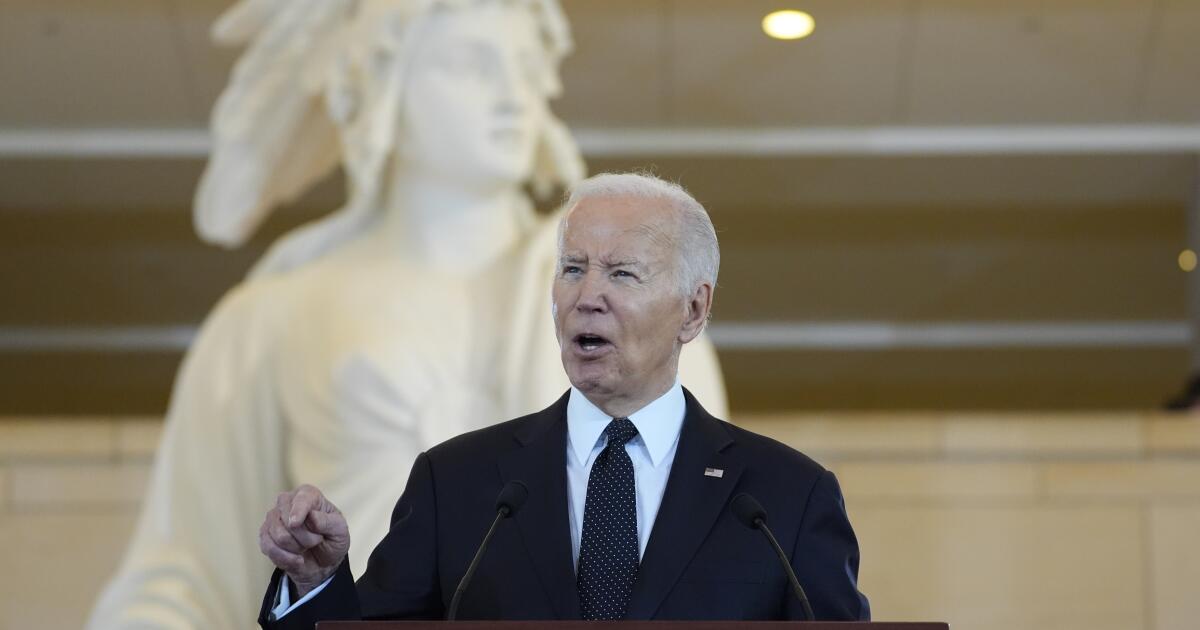As a professor at UC Santa Barbara, I investigate the effects and solutions to ocean pollution, including oil filters, spills and DDT on the high seas. I started my career investigating the interaction of bacteria and hydrocarbon gases in the ocean, observing the unusual propensity of microbes to consume gases that bubbled under the bottom of the ocean. The necessary financing came from the largest basic scientific company in the world, the National Science Foundation.
My research was esoteric, or so my in -laws thought (and everyone else), until 2010, when the drilling platform on the high horizon of deep waters exploded and an uncontrolled flow of hydrocarbons and gas fluid knelt in the deep ocean on the high seas from Louisiana. It was a disaster not mitigated in the Gulf, and suddenly my esoteric work was in demand. The additional support of the National Science Foundation allowed me to go on the high seas to help discover what was happening with that oil in the deep ocean. I could help explain, contextualize and predict what would happen next for anxious residents of the Gulf States, all possible by the forecast of Vannevar Bush, the original architect of the National Science Foundation.
Now the great scientific company that has allowed my research and much more is on the edge of its own disaster, thanks to the actions and proposals of the Trump administration. Leaving aside the specific cuts to the discovery centers, such as Harvard and Columbia, and the rumors that the public universities of California are the following, the most obvious threats to research are draconian budget reductions proposed in virtually all areas of science and medicine, along with movements to prevent foreign scientists from carrying out a study based on research in the United States, the last budget of the United States. UU. For a 55% cut of science in national science, with the movements of scientists in 75% of the 75% of the 75% of the 75% of the 75 years. area. Such a severe and sudden reduction will reverberate for years and ten will the discovery and study of the ocean, and much more.
But a more subtle and equally serious cut is already underway, to finance indirect costs that allow universities and other institutions to organize research. It seems difficult to meet by indirect costs, which are sometimes called “overload” or “facilities and administration”. But in essence, these funds facilitate science.
For example, indirect costs do not pay my salary, but they do pay small items such as my laboratory layer and larger tickets and tickets such as the use of my laboratory space. They do not pay for the chromatograph that I use in my experiments, but they do pay electricity to execute it. They do not pay the sample tubes that feed my chromatograph, but they support the purchasing and receivers staff that helped me acquire them. They do not pay for the chemical reagents that I put in those sample tubes, but they support the safe elimination of the reagents used, as well as the health and safety personnel that facilitate my safe chemical use.
They do not pay salary for my research assistants, but they do support the Human Resources Unit through which the contracts. They do not pay for international trips to present my research abroad, but cover a federal mandatory compliance process to ensure that I am not improperly influenced by a foreign entity.
In other words, indirect costs support the deep bank of the characters and support services that allow me, the scientist, to focus on the discovery. Without those services, my research company falls apart and new discoveries with it.
My indirect cost rate is negotiated every few years between my institution and the federal government. The negotiation is based on hard data that show the real and acceptable costs related to research incurred by the institution, together with cost projections, often linked to federal mandates. Through this rigorous and iterative mechanism, the general expenses rate in my institution, as a percentage of direct research costs, recently adjusted to 56.5%. I would like it to be less, but that is the real cost of executing a research project.
The present model to calculate indirect costs has defects and could be improved. But 15%reduction, as required by the Trump administration, will be devastating for scientists and institutions. All the functions in which I trust to carry out sciences and train the future workforce will see amazing cuts. Three quarters of my local research support infrastructure will collapse. The costs are indirect, but the effects will be immediate and direct.
More worrying is that we will all suffer in the long term due to the discoveries, advances and advances that change the life we do not achieve.
The scientific greatness of the United States is fragile. Before the beginning of the National Science Foundation, my grandfather had to learn German for his doctorate in Biochemistry in Penn State because Germany was then the scientific leader of the world. If the president's efforts to reduce direct and indirect costs occur, it can be China tomorrow. That is why today we need to remind our elected officials that the United States scientific company pays exceptional dividends and that chaotic and punitive cuts risk irreparable damage.
David L. Valentine is a professor of marine and geochemical microbiology at UC Santa Barbara.
Perspectives
Times Insights It offers an analysis generated by the voices content to offer all points of view. Insights does not appear in any news article.
point of view
Perspective
The following content generated by AI works perplexed. Los Angeles Times editorial staff does not create or edit the content.
Ideas expressed in the piece
- The article argues that indirect costs (general expenses) are essential for research infrastructure, which cover critical expenses such as laboratory maintenance, equipment operation, security compliance, administrative support and regulatory processes, without which the scientific discovery cannot work[1].
- He argues that the reimbursement of the indirect costs of the Trump Administration of the Trump administration at 15% would inflict “amazing cuts” to the research support systems, collapsing three quarters of the existing infrastructure and the paralyzing scientific progress[2][3].
- The piece warns that the broader Budgets of NSF proposed (57% throughout the agency and 75% in the ocean investigation, threatened to “tithe” the scientific leadership of the United States, risking a change in the domain of global innovation for nations like China[3].
- It emphasizes that these cuts ignore the real negotiated costs of the investigation (for example, the rate of 56.5% of the UC Santa Barbara) and would undermine “discoveries, advances and advances that change life”[1].
Different views on the subject
- Trump administration frames indirect costs as an excessive “overload” not related to central research, justifying the 15% limit as a cost savings measure to redirect funds to prioritized fields such as AI and biotechnology[1][2].
- Officials claim that budget cuts focus on “national priorities”, such as quantum computing, nuclear energy and semiconductors, arguing that financing “all areas of science” is unsustainable under tax restrictions[1][3].
- The Administration defends its position against the financing of research on “misinformation” or “misinformation”, citing constitutional protections of freedom of expression and rejection of studies that could “advance in a favorite narrative” in public matters.[1].
- Policy formulators argue that reductions force universities to rationalize operations, although federal judges have blocked similar limits in other agencies (for example, NIH, department of energy) as “arbitrary and capricious”[2].












